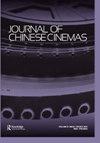A lurking ambivalence: The discourse on female taiyupian stars’ experiences in Hong Kong
IF 0.4
3区 艺术学
0 FILM, RADIO, TELEVISION
引用次数: 1
Abstract
Abstract This paper analyses the transnational careers of taiyupian female stars, who, during the first downturn in taiyupian production during the late 1950s and early 1960s, travelled to Hong Kong to make Amoy-dialect films. This collaboration contributed to a transnational Hokkien ethnic film culture and has been claimed for the formation of a Hokkien-identified cultural sphere. However, a closer examination of star discourses surrounding their experiences of working and living in Hong Kong reveals ambivalence that complicates this proposition. This paper argues that the shared ethnic Hokkien heritage that enabled co-productions is complicated by an implicit unease toward modernity as well as market competition between the film industries in Taiwan and Hong Kong.一种潜藏的矛盾心理:关于香港女太极图明星经历的论述
摘要本文分析了在上世纪50年代末至60年代初太极拳制作的第一次低迷时期,太极拳女明星们前往香港拍摄厦门方言电影的跨国事业。这种合作促成了跨国闽南族电影文化,并被认为是形成了一个以闽南族为特征的文化圈。然而,仔细研究明星们在香港工作和生活的经历,就会发现他们的矛盾心理使这一命题变得复杂。本文认为,共同的闽南族传统使合拍片得以实现,但对现代性的含蓄不安以及台湾和香港电影产业之间的市场竞争使其复杂化。
本文章由计算机程序翻译,如有差异,请以英文原文为准。
求助全文
约1分钟内获得全文
求助全文

 求助内容:
求助内容: 应助结果提醒方式:
应助结果提醒方式:


